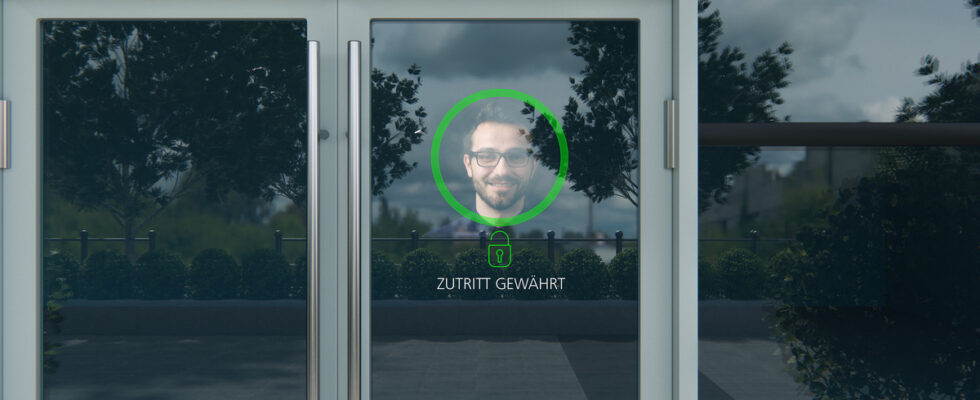Does your window have eyes? Not yet, but the optician and glass and image specialist Zeiss intends to give him some. To do this, it hopes to integrate its Multifunctional Smart Glass suite of technologies into every possible glass surface.
In addition to display techniques qualified by Zeiss “holographic”, an intriguing – and potentially disturbing – brick is its invisible camera. Taking advantage of the property of its glass, capable of guiding light rays passing through the glass panel towards a hidden sensor, Zeiss promises cameras that manufacturers can install anywhere.
These “holocams” will have the advantage of being integrated even in the middle of a glass panel. So, as an example image from Zeiss shows, we can imagine building entrances equipped with a facial recognition camera to guarantee access only to registered personnel. No more need for an off-center camera which forces you to look from another angle and slows down the identification process.
The door is watching you
Here questions of the right to privacy, image theft and even espionage arise directly. If the technology works as Zeiss promises, how can we be sure that the windows of a building (randomly, an embassy or consulate) or vehicle will not be collecting photos or videos? There is no doubt that these questions will arise quickly – at least in Europe – if the concept of German hits the mark.
To this ability to hide cameras in glass, Zeiss adds a less controversial feature: the display. In the example mentioned above, where we imagine the camera placed in the middle of the window, we can clearly see the photo and the name of the employee displayed in a green circle with a mention of access granted.
A video game interface in the car
A dynamic display, equivalent to that of a television, but which will disappear in favor of classic transparency when the employee has returned to the premises. This use could obviously find place in buildings, but we can also imagine it in automobile windshields. Like HUD (Head Up Display) type video game interfaces, the car system could display information superimposed on the entire surface of the window (speed, direction, alerts, etc.).
Four decades of video games have created a common visual culture, limiting the risk of distraction from the interface, and the positioning of information on the road could add to driver safety. Eye fatigue linked to moving the eyes to the driving instruments would also be drastically limited, while keeping drivers’ gaze on the road.
This ability to use the projection of light on an entire glass panel, Zeiss also imagines it inside buildings, whether it is elevator buttons linked to staff authorizations, or bay windows equipped with 3D interfaces, hence the term “holographic”.
Full of promise, Zeiss’ press release however fails to make us understand how its almost dystopian vision will be made possible. Hopefully the German will quickly provide more details, not only technological (what type of glass, how the light is guided, how the integration of electronics is made possible, etc.), but also legal . Because the fears raised by its Multifunctional Smart Glass are as high as the technological work accomplished.
